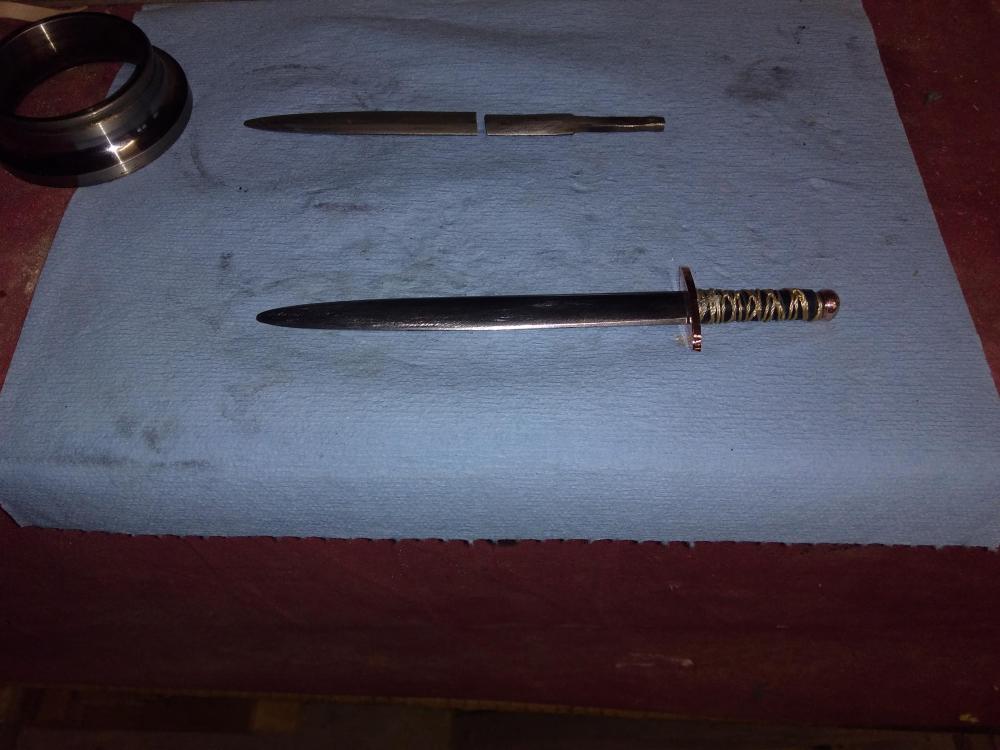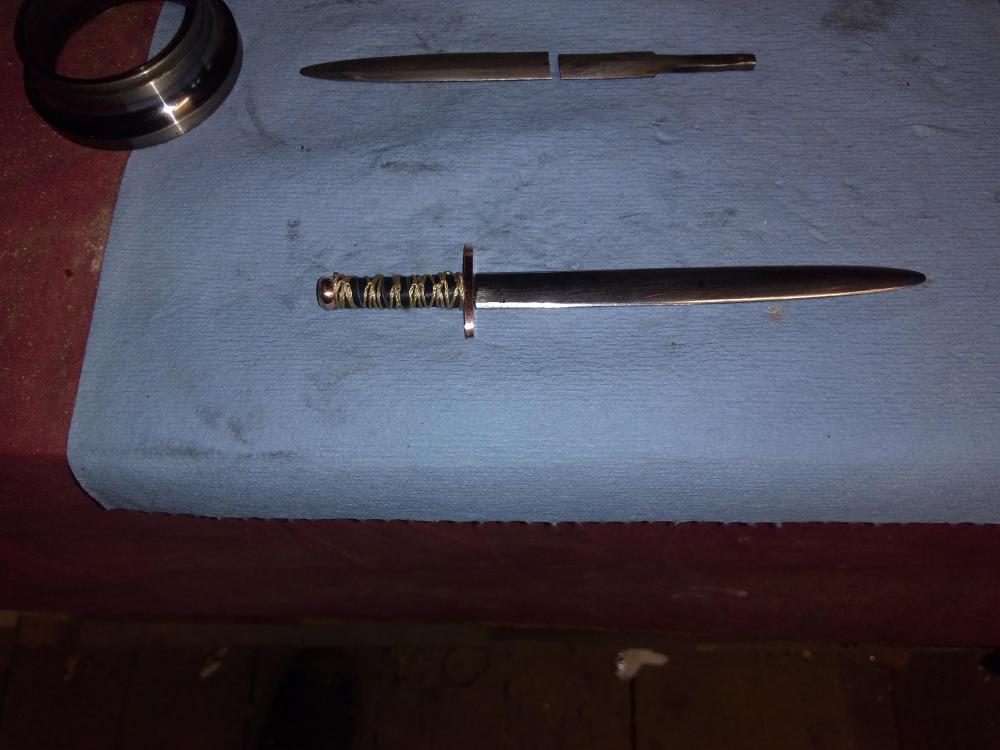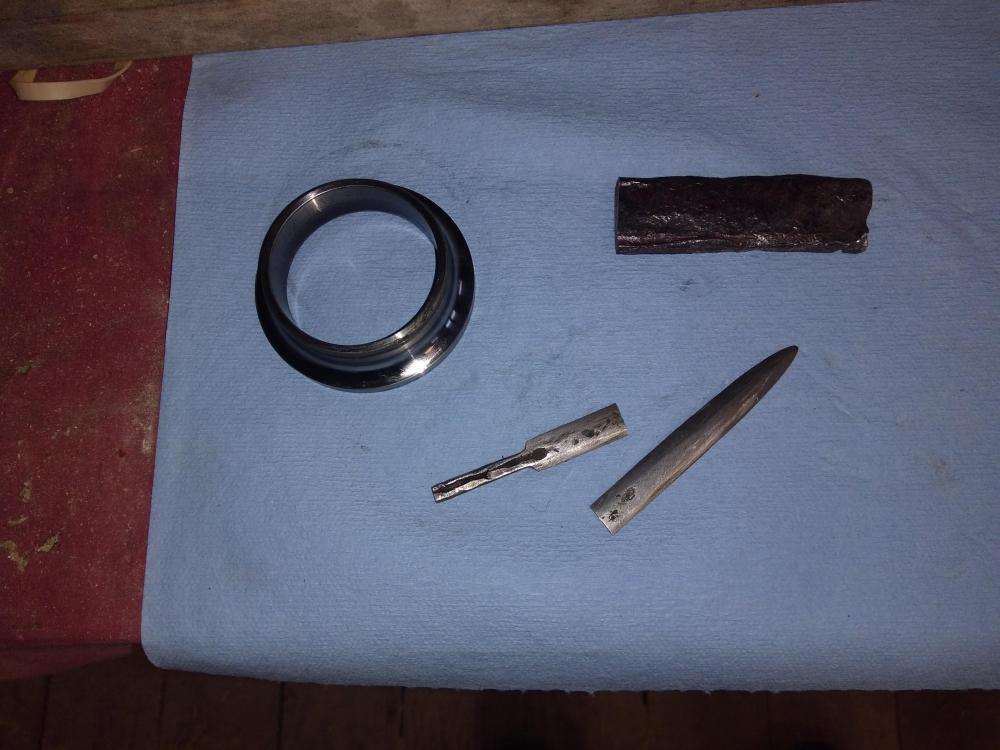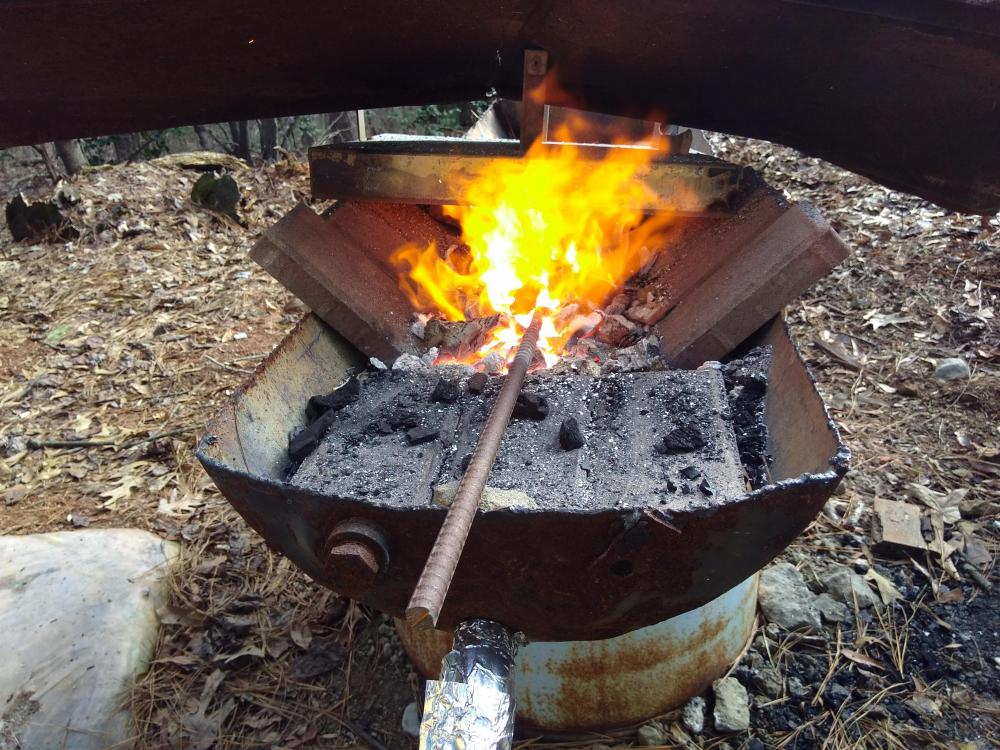
bluerooster
Members-
Posts
568 -
Joined
-
Last visited
Content Type
Profiles
Forums
Articles
Gallery
Downloads
Events
Everything posted by bluerooster
-
Yes fire pot is kinda thin at 3/16" But it's what I had on hand. I think it will work for a while. Thanx for the replies, and tips.
-
What did you do in the shop today?
bluerooster replied to Mark Ling's topic in Blacksmithing, General Discussion
Too much air when it blows the charcoal out of the box. I need to cut in a sizable waste gate, to better control air flow. If I leave the ash dump open, air is about right. Tuyere is 2 1/4" exhaust pipe, fed with 1 7/8" to a hair dryer. -
What did you do in the shop today?
bluerooster replied to Mark Ling's topic in Blacksmithing, General Discussion
Built a fire in the new forge, to burn off what little paint remains on the firebox. Found out that I have too much air for charcoal. -
What did you do in the shop today?
bluerooster replied to Mark Ling's topic in Blacksmithing, General Discussion
spent the day building a new forge to burn coal. -
I run a LeBlond lathe 10hp 3 phase, off of a 3 phase motor sitting on the floor. Thing about 3phase motors is that they will run just fine on single phase 220, but they will not start. I run the "converter" motor on 220, it generates the third leg for the 3 phase motor on the lathe. I start the "converter" motor with a pull rope. Once it's running, I leave it running, until I'm finished working with the lathe. One thing to remember is that the motor on the floor absoloutely has to be the same or greater hp. 3 phase motors are cheap, compared to single phase of same hp.
-
My existing forge works very well with charcoal, but due to it's construction, I feel that it wouldn't work too well with coal. So, this morning, I spent better part of an hour scrounging around behind the shop, and out to the barn. I then took what I managed to round up, and started to build a forge. The table is cut from a water heater, the firebox is made from a piece of plate that had some sort of HV relay, with associated circuitry attached to it. Frame is a couple of old T-posts, legs are re-bar. I'll be adding bracing, and a tuyere tomorrow. I'll make a flapper of sorts for the bottom of the tuyere, to allow coal gas, and clinkers to escape.
-
Do you need a flow meter on an Argon tank?
bluerooster replied to So Cal Dave's topic in Welding Equipment
Also, a pinhole in the hose to the torch will cause all kinds of issues. -
TIG OR MIG the age old question help please
bluerooster replied to hobb0042's topic in Welding Equipment
I have an old Airco "heliwelder". It does both stick, and tig. I want to get a spool gun for it. I also use my oxy/acetylene torch quite a bit. I use the tig for aluminum, and stainless, and either the stick, or torch for everything else. I gas welded sheet metal for many years, before I got the set-up that I now have. -
Wagoner Ranch brand came out backwards, They kept it that way.
-
I would think that the Habuki, Tsuba, and Tsuka, were made of whatever the smith wanted to make them out of.
-
Yes, when the steel becomes non-magnetic the quench temp has been achieved. Also, be careful about the heat being even throughout the blade. The blade that I snapped off, I heated with the torch, with the blade vertical, tang down, started heating near the tang, and worked up to the thinner parts, making sure the tang didn't get hot, but also making sure the thinner parts didn't get hotter than the thicker parts. I don't have a grinder per-se, so I filed the profile, prior to heat treat. Then all I hadda do is work it by hand on a stone.
-
That sounds like a good idea.
-
That's kinda what I was thinkin'. I was wondering what would happen if I took 2 twelve inch pieces on edge, welded together, and welded my 3/4" x 4" x 12" to them as a face. I could come up with about 110 pounds of nice flat steel, to beat on. But welding all that together, the power bill would probably break me.
-
As mentioned before, I too was wondering if it may be an officers sword. But a good find anyway. Glad you could rescue it.
-
Only two fingers, on the forklift control. It weighs 240 pounds exactly.
-
I think I may have picked up 2 or 3 anvils today. Of course there is work to be done, but I think I can turn this into at least two anvils, most likely more.
-
Very familiar. :) I figured out if I slow down the air, deeper bed of coals, and un burned material on top, I still get good and hot, with way less scale. I managed to regulate the airflow, by cutting valves in the tuyere to allow air to bleed out, then valving said holes, I can control airflow pretty well. The second letter opener, came out good enough to put a handle on, and use.
-
Old sucker rods, where I come from, are all in use for fencing. The ones not being used for fencing, are still being used in the well. Lots of polish rod, being used for headache racks on pickups.
-
Found a chunk of RR track, made into an anvil shape. $300. Dang, I can go to the local farrier supply, and get a brand new 75 pounder for that. Today I went to the scrap yard, I found a flat steel, about 2"x6"x3foot. <$20. :D I'll use that 'till I can find something else. A friend of mine will give me his grand dads anvil, but it needs re-faced.
-
I see many reference 4140 steel, but have yet to see any mention of the venerable old 4130. Many old axle shafts are made from 4130, as well as many enclosed driveshafts. Along with various other easily obtainable car parts. Just curious as to the preference of 4140 over 4130. I have plenty of 4130 to work with, but I'd have to go out and buy 4140.
-
Thanx for the tip. I'll remember that.
-
Being in construction, I've been swinging hammers pretty much all my life from age 12. I've found that the hammer it's self can cause elbow trouble. Regardless the weight of said hammer. I can swing a 20oz Eastwing for about an hour, and my elbow is shot. But a 2 pound Bluegrass, I can swing all day, with no ill effects. It's the different construction, and balance of the hammer, that is the difference for me. As to grip, it's hard to describe, Thumb and first two fingers carry the lions share, with the other two adding control. The pinky finger is actually curled behind the handle. With a very relaxed grip. For lighter work, it's the thumb and fore finger, with ring finger providing control, other two relaxed. Mabe I'm doing it wrong, but There are certian hammers that hurt me, and other hammers that don't. I can usually tell when I pick one up, which it is.
-
What did you do in the shop today?
bluerooster replied to Mark Ling's topic in Blacksmithing, General Discussion
No particular reason, other than being a complete newbie, and wanting to try it. I learned a lot doing that. Like 52100 likes to be hot worked, but not too hot. It also quits moving before it loses color. Small parts get cool real quick, so be accurate with the few licks you have. It takes more than one heat and slow cool to get it to the point that it can be filed. Also, my "ALO" is not the best in the world for working such material, but with patience it can be done. Here is the finished letter opener made from the other half of that same race: -
What did you do in the shop today?
bluerooster replied to Mark Ling's topic in Blacksmithing, General Discussion
Thanx for pointing it out. I thought it was delamination. I'd drawn and folded it several times, and I figured that was a non weld of one of the folds. Due to the direction of it running edge to edge. Here's how it began it's life: On left is inner race, the other things are made from the outer race. Top is half the outer race, flattened, drawn, and folded, 2 folds. The broken blade below is the other half of the outer race, drawn and folded about 10 times, and formed into the blade shown. The next pic is that chunk in the fire, with a handle attached. -
Outdoor Shop Advice Needed
bluerooster replied to rockusbacchus's topic in Building, Designing a Shop
I built my forge from an old water heater, and clay lining. A few fire bricks that I can move around to make adjustments to the fire pit. Solid fuel, not gas. It lives outside, along with my "ALO". The only thing that bothers me is the charcoal "fireflies" in fall when there are leaves on the ground.
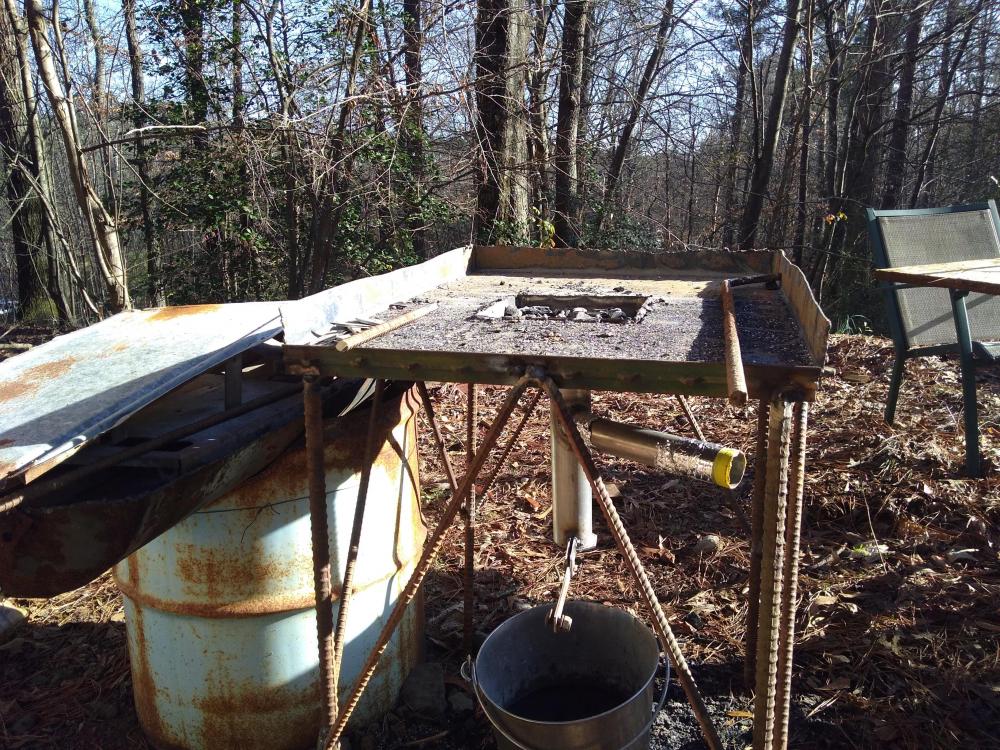
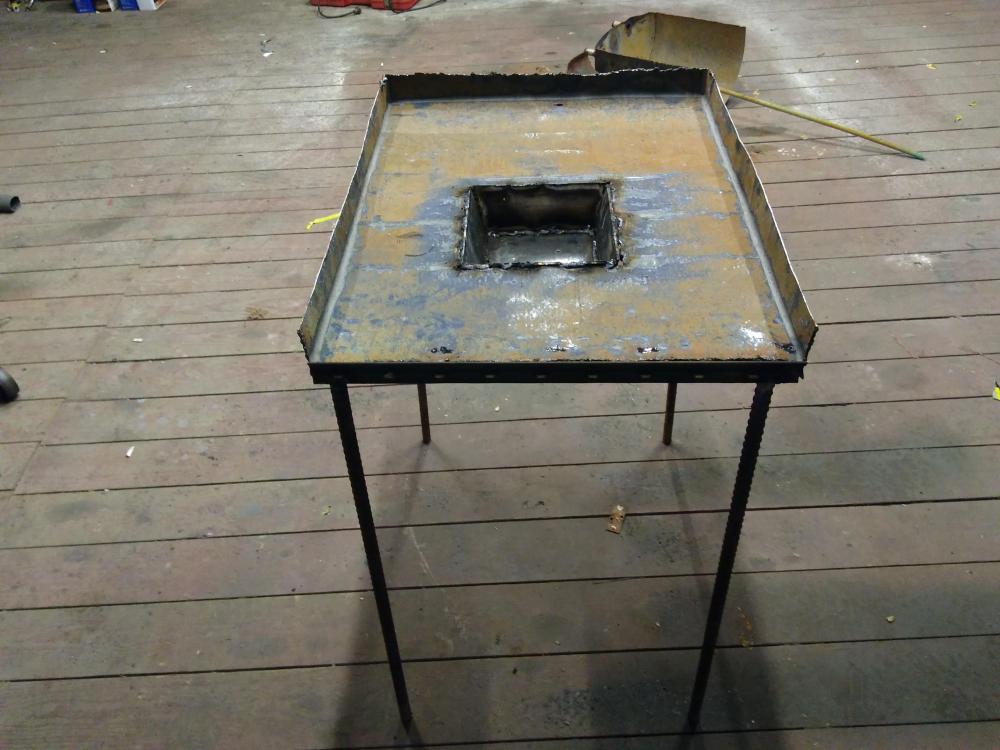
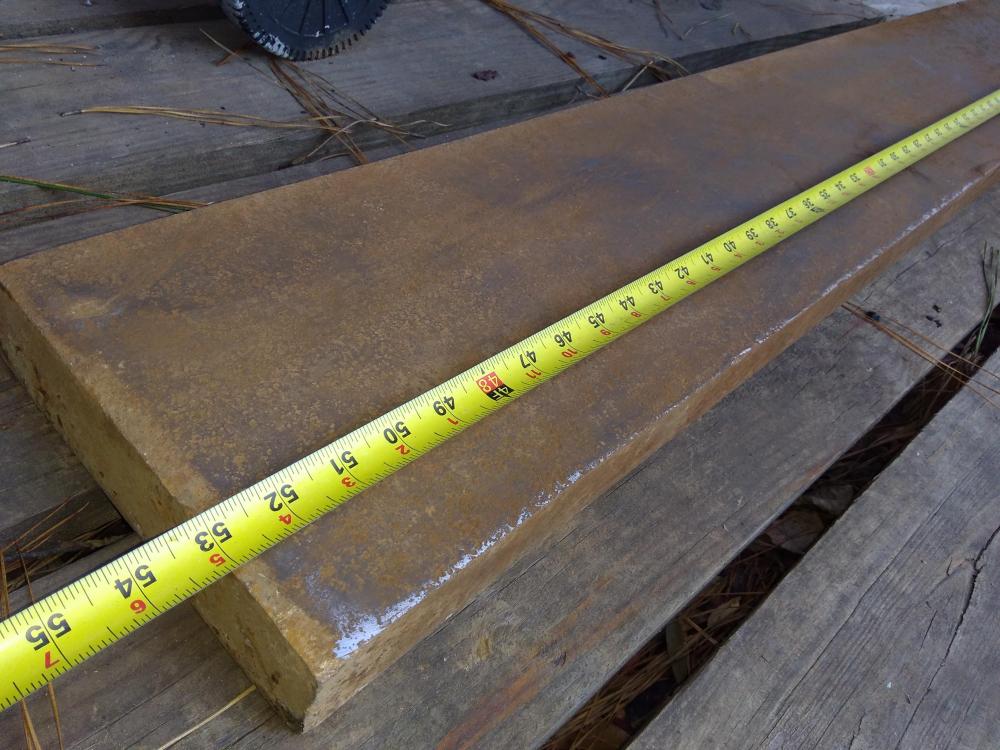
.jpg.49e3a8c3300ca5cd4c7d9f337e0abdef.jpg)
.jpg.e2c32f1e3534a833096c9488913adc4e.jpg)
